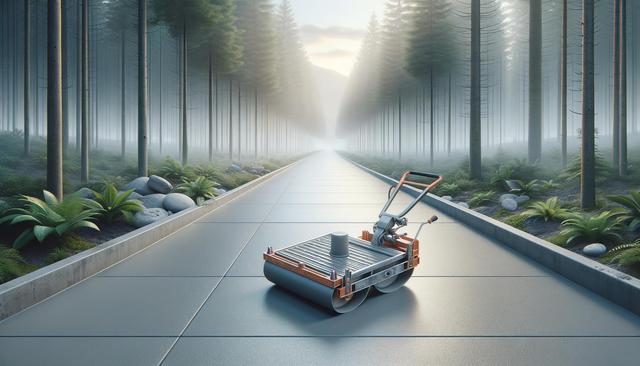What Is Concrete Resurfacing?
Concrete resurfacing is a process that involves applying a new layer of material over existing concrete to improve its appearance and functionality. This method is commonly used on driveways, patios, sidewalks, and garage floors that have become worn, cracked, or stained over time. Instead of tearing out and replacing the old concrete, resurfacing allows homeowners and property managers to restore the surface at a fraction of the cost and time.
The resurfacing material is typically a special blend of cement, sand, polymer modifiers, and other additives that provide strength and durability. These compounds are designed to bond firmly with the existing surface, creating a new finish that can last for years with proper care. Additionally, resurfacing provides an opportunity to enhance aesthetics through decorative finishes, such as stamping, staining, or coloring.
When Is Resurfacing a Good Option?
Concrete resurfacing is not always the right choice for every surface. It works best when the underlying structure is still sound and free of major structural damage. Here are a few scenarios where resurfacing is typically a good solution:
- Minor cracks or surface imperfections
- Discoloration or fading from weather exposure
- Uneven texture or surface wear
- Desire for a decorative or updated look
If the concrete has deep cracks, extensive spalling, or foundation issues, more substantial repair or replacement may be necessary. A professional evaluation can help determine the feasibility of resurfacing based on the existing condition of the concrete.
In cases where resurfacing is appropriate, it can dramatically improve the visual appeal and usability of a space. Whether you’re preparing a property for sale or simply want to enjoy a refreshed environment, resurfacing offers a practical and visually appealing solution.
The Resurfacing Process Explained
The concrete resurfacing process involves several key steps to ensure a strong and lasting result. Preparation is critical, as the success of the new surface depends heavily on how well the old surface is cleaned and prepped. Here’s a general overview of the typical process:
- Cleaning: The surface is pressure-washed and scrubbed to remove dirt, grease, and loose material.
- Repair: Minor cracks and holes are patched using suitable repair compounds.
- Priming: A bonding agent may be applied to improve adhesion between the old and new layers.
- Application: The resurfacing compound is mixed and spread evenly over the surface using trowels or squeegees.
- Finishing: Decorative treatments like stamping or coloring can be added before the material cures.
The curing time for resurfacing materials can vary depending on weather conditions and the specific product used. In general, light foot traffic can resume after 24 hours, while heavier use such as vehicle traffic may require several days.
Benefits of Choosing Concrete Resurfacing
There are several advantages to resurfacing concrete rather than replacing it entirely. In addition to cost savings, resurfacing offers enhanced design flexibility and minimal disruption during the renovation process. Some of the key benefits include:
- Affordability: Resurfacing is typically more budget-friendly than full replacement.
- Time-saving: Most resurfacing projects can be completed within a few days.
- Customization: Homeowners can choose from a variety of colors, textures, and patterns.
- Eco-conscious: Resurfacing reduces waste by reusing the existing concrete base.
- Improved safety: A new textured surface can increase traction and reduce slip hazards.
Whether you’re enhancing curb appeal or preparing a commercial space for clients, resurfacing provides a reliable way to modernize and protect concrete surfaces without the expense and effort of demolition.
Maintenance Tips for Resurfaced Concrete
Once your concrete has been resurfaced, proper maintenance is essential to keep it looking good and performing well over time. Fortunately, the upkeep for resurfaced concrete is relatively straightforward. Here are some practical tips to help extend the life of your newly refreshed surfaces:
- Seal the surface: Applying a quality sealer helps protect against stains, moisture, and UV damage.
- Clean regularly: Sweep and wash the area to prevent buildup of dirt and debris.
- Avoid harsh chemicals: Use mild cleaning agents to prevent damage to the surface finish.
- Repair promptly: Address any small cracks or chips early to prevent them from spreading.
- Limit heavy loads: Avoid placing extremely heavy equipment or vehicles on the surface when possible.
With these simple practices, property owners can enjoy the benefits of resurfaced concrete for many years. Regular maintenance also helps preserve the aesthetic appeal, ensuring that the surface continues to add value and function to your home or business environment.




Leave a Reply